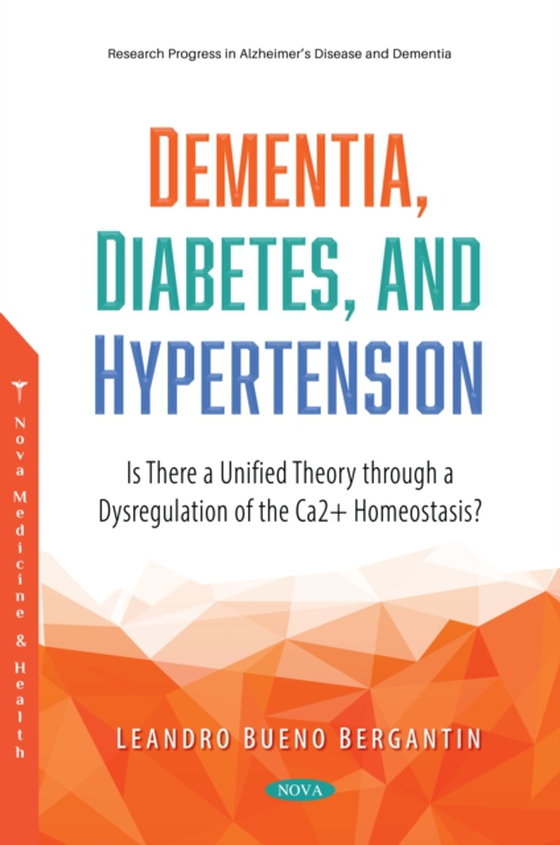
Dementia, Diabetes, and Hypertension: Is There a Unified Theory through a Dysregulation of the Ca2+ Homeostasis? e-bog
948,41 DKK
(inkl. moms 1185,51 DKK)
Dementia, diabetes, and hypertension are considered huge medical problems around the world, costing many millions of dollars to the medical health systems. Curiously, hypertension has been clinically linked with a higher risk for decline of cognition, as shown in dementia patients. In addition, there is a clear clinical association between hypertension and diabetes, reflecting substantial simil...
E-bog
948,41 DKK
Forlag
Nova
Udgivet
12 februar 2021
Længde
155 sider
Genrer
Medicine: general issues
Sprog
English
Format
pdf
Beskyttelse
LCP
ISBN
9781536192865
Dementia, diabetes, and hypertension are considered huge medical problems around the world, costing many millions of dollars to the medical health systems. Curiously, hypertension has been clinically linked with a higher risk for decline of cognition, as shown in dementia patients. In addition, there is a clear clinical association between hypertension and diabetes, reflecting substantial similarities in their etiology. In fact, consistent data support that patients diagnosed with diabetes have shown an increased risk of presenting cognitive dysfunctions, clinical signs of dementia. Considering the cumulative knowledge from the scientific literature, we can now link Ca2+ signals dysregulations as an upstream issue for hypertension, diabetes and other inflammatory processes, and dementia. Regarding therapeutics, hypertensive patients have been classically treated with Ca2+ channel blockers (CCBs), medicines whose mechanism of action consists in reducing the influx of Ca2+ into the cells. Intriguingly, many clinical reports have been demonstrating off-label effects for CCBs. In hypertensive patients treated with CCBs, it can be observed a lower incidence of dementia such as Alzheimer's disease. The possible mechanism of action could be attributed to a restoration of the Ca2+ homeostasis. In addition, in hypertensive patients treated with CCBs, it can be also observed an improvement of diabetes status such as glycemic control. A possible mechanism of action could be due to a restoration of insulin secretion, then achieving glycemic control, and a reduction of the pancreatic -cell apoptosis. Thus, this book puts together fundamental concepts, and current therapies to treat dementia, hypertension, and diabetes, including novel therapeutics coming from the pharmacological manipulation of Ca2+/cAMP signalling. Finally, this book compiles more than 300 references from the scientific literature, including data of high evidence such as meta-analysis and systematic reviews, and discusses pharmaceuticals already approved and clinically safe, e.g., CCBs, then allowing sustained increments in the life quality of age-related patients.
 Dansk
Dansk

